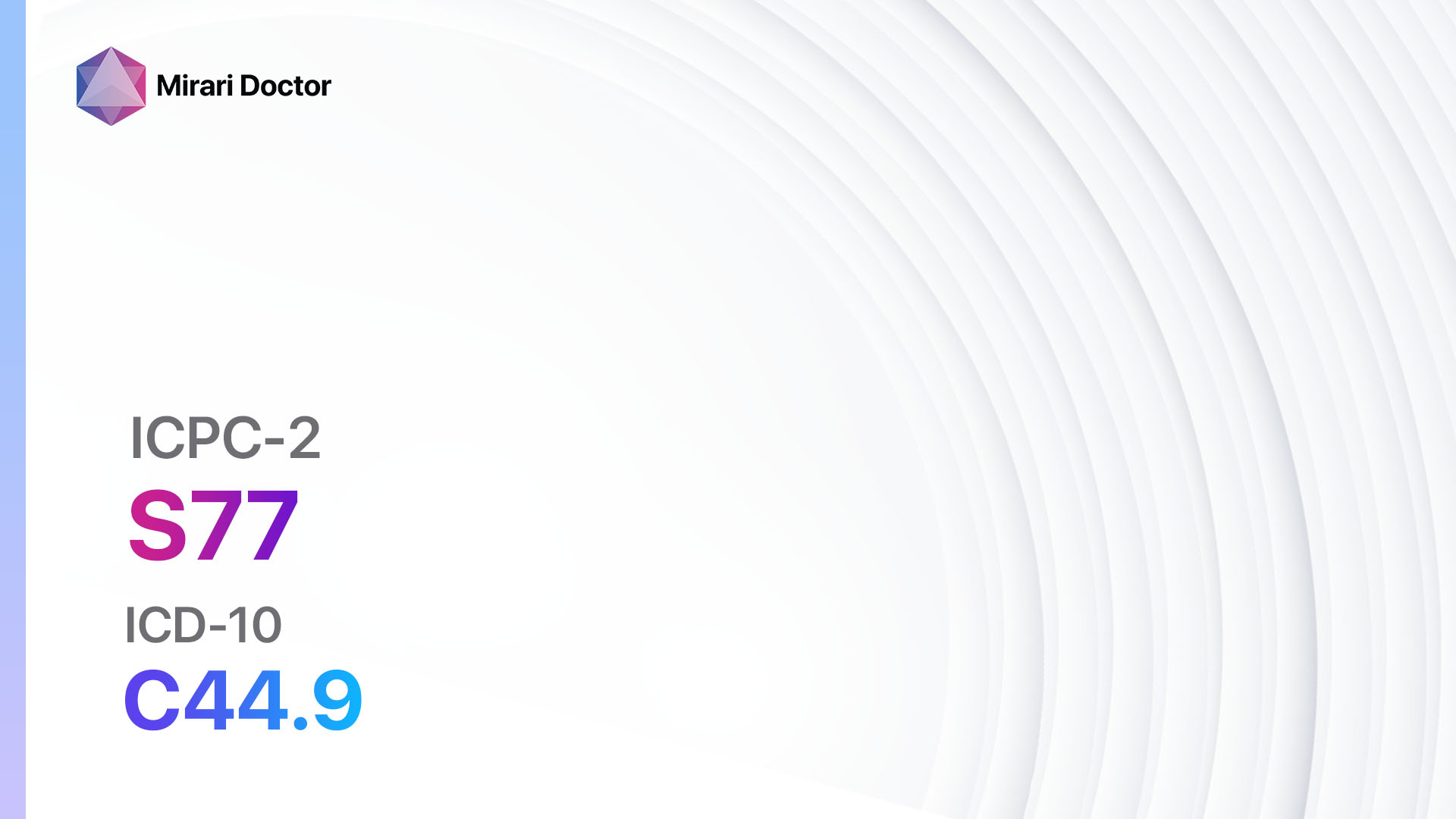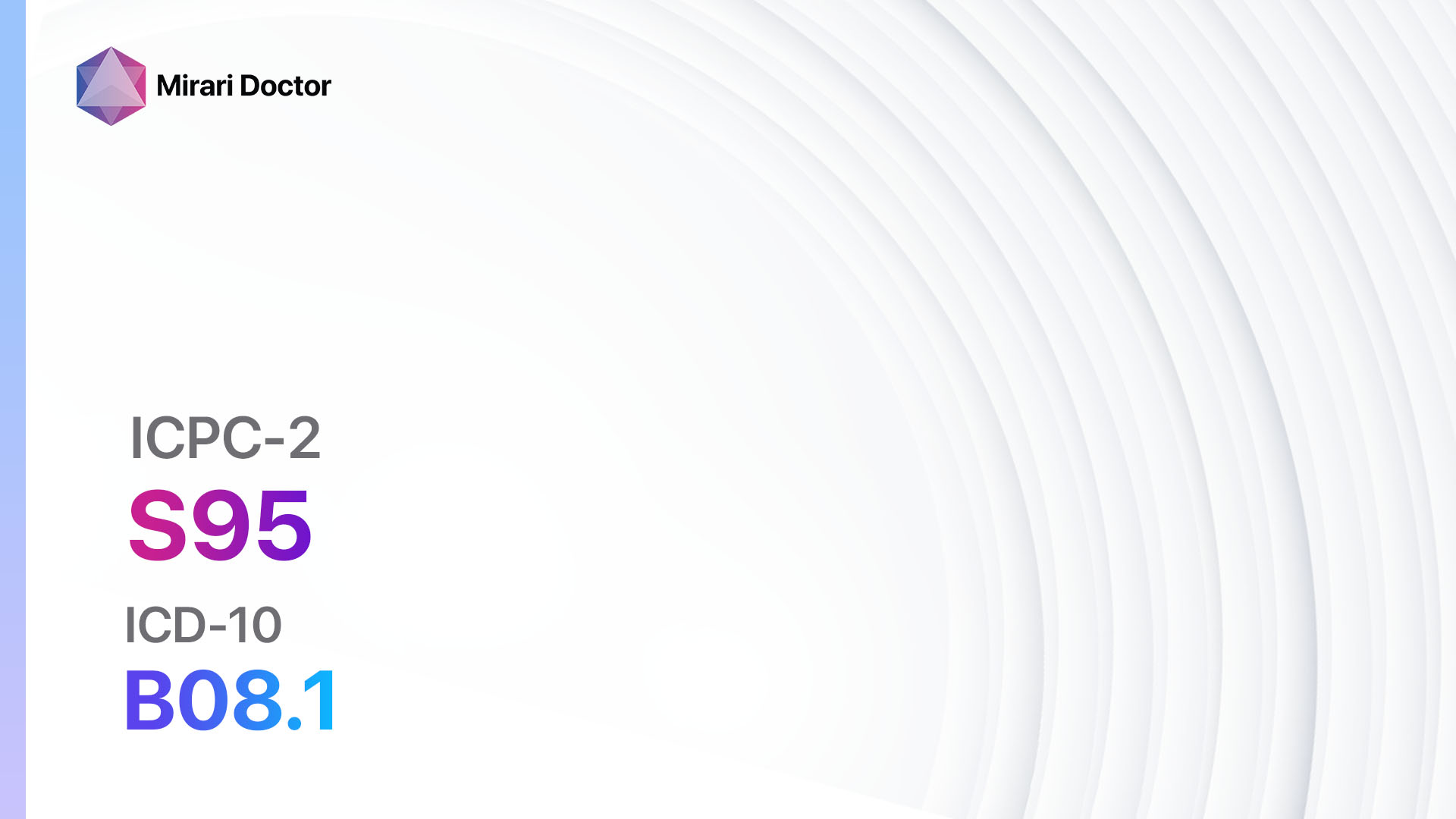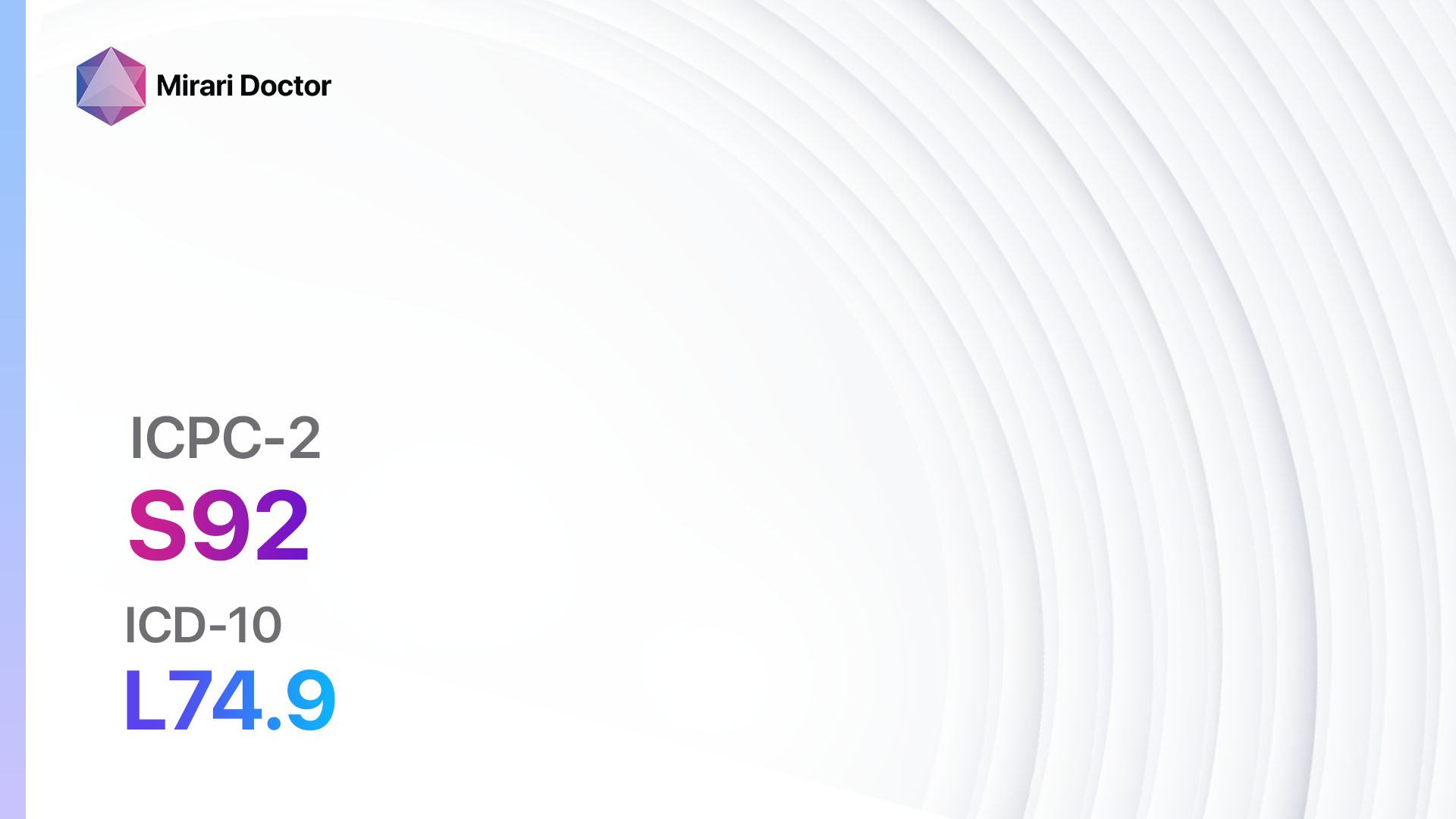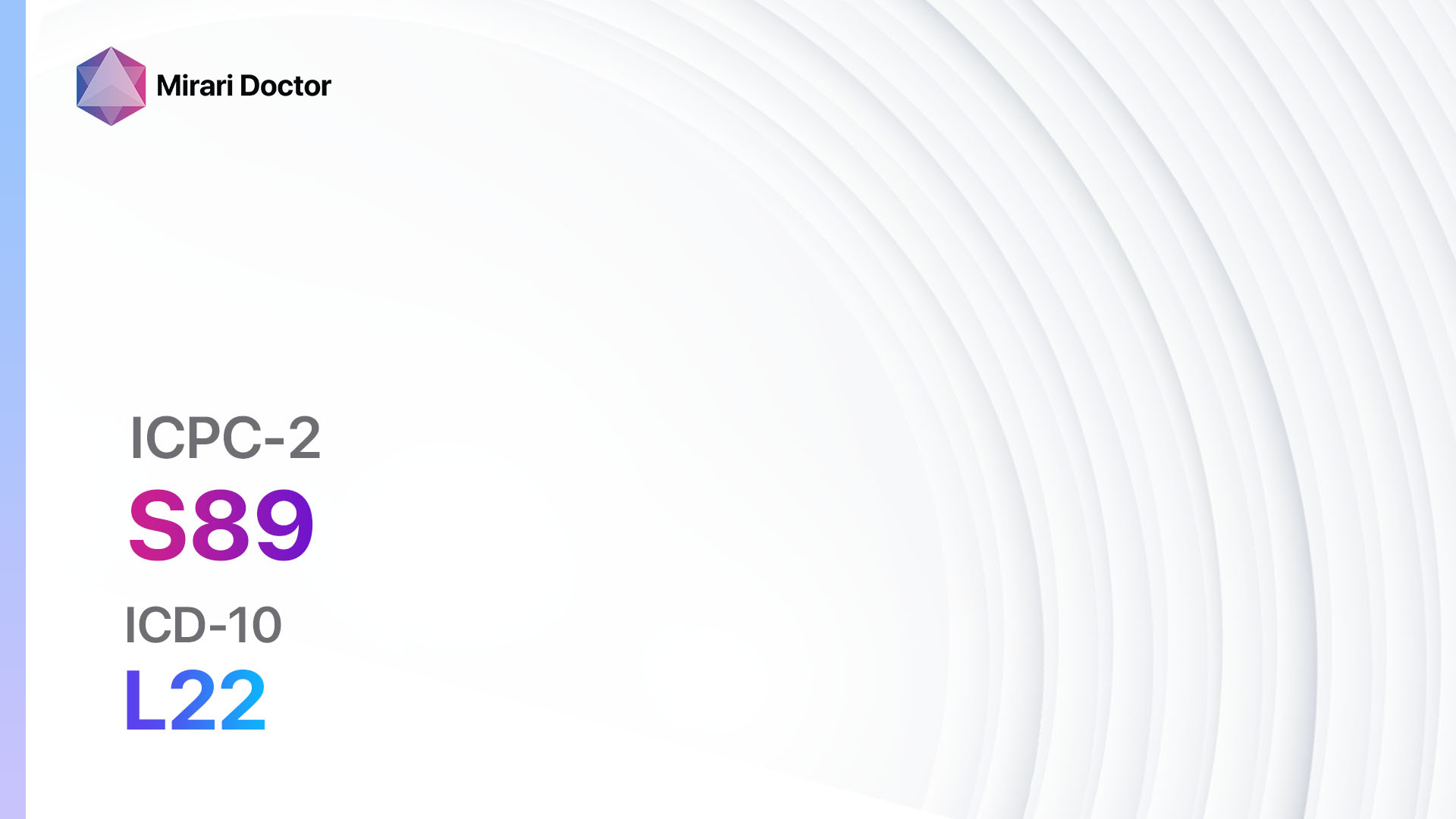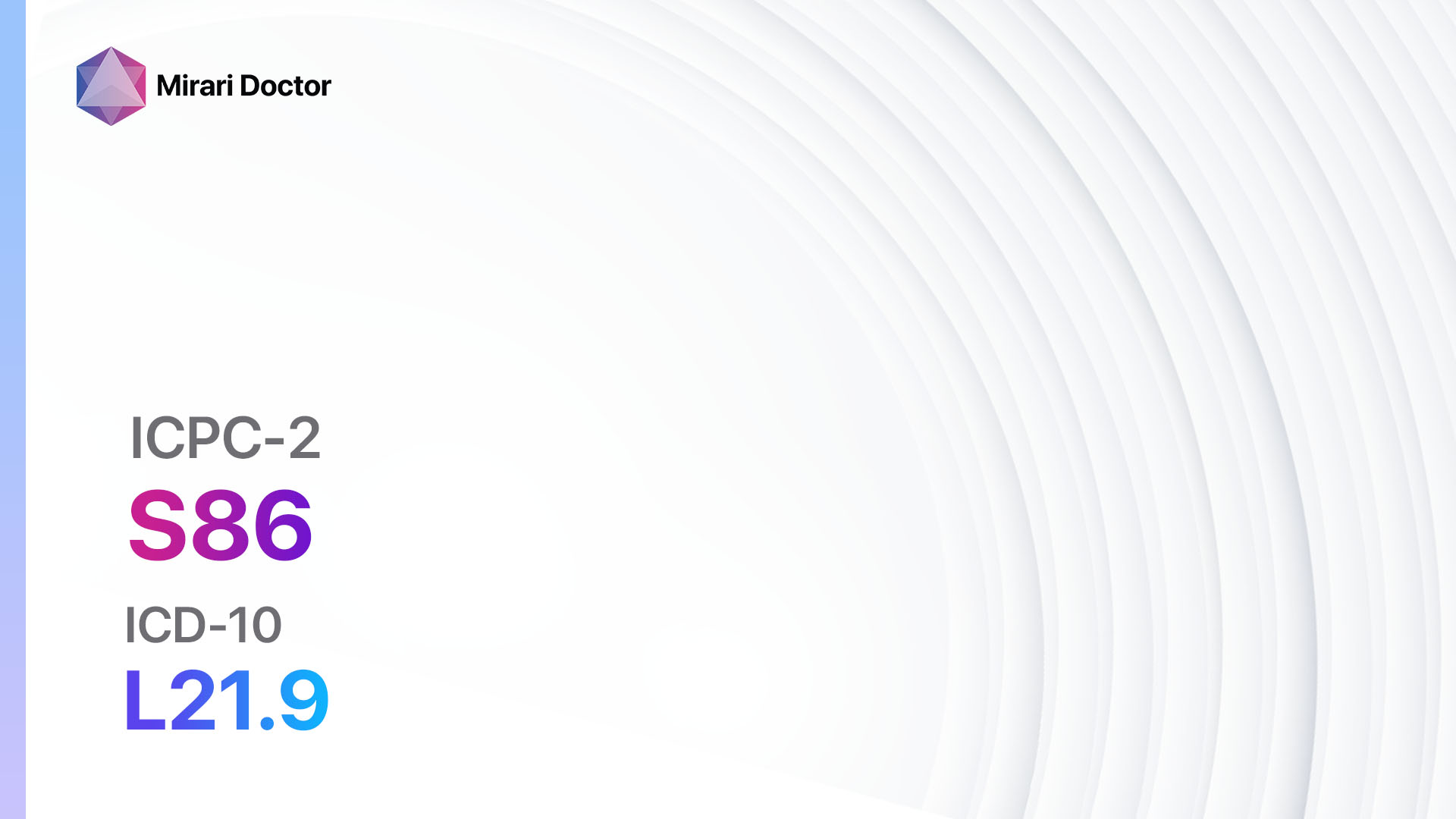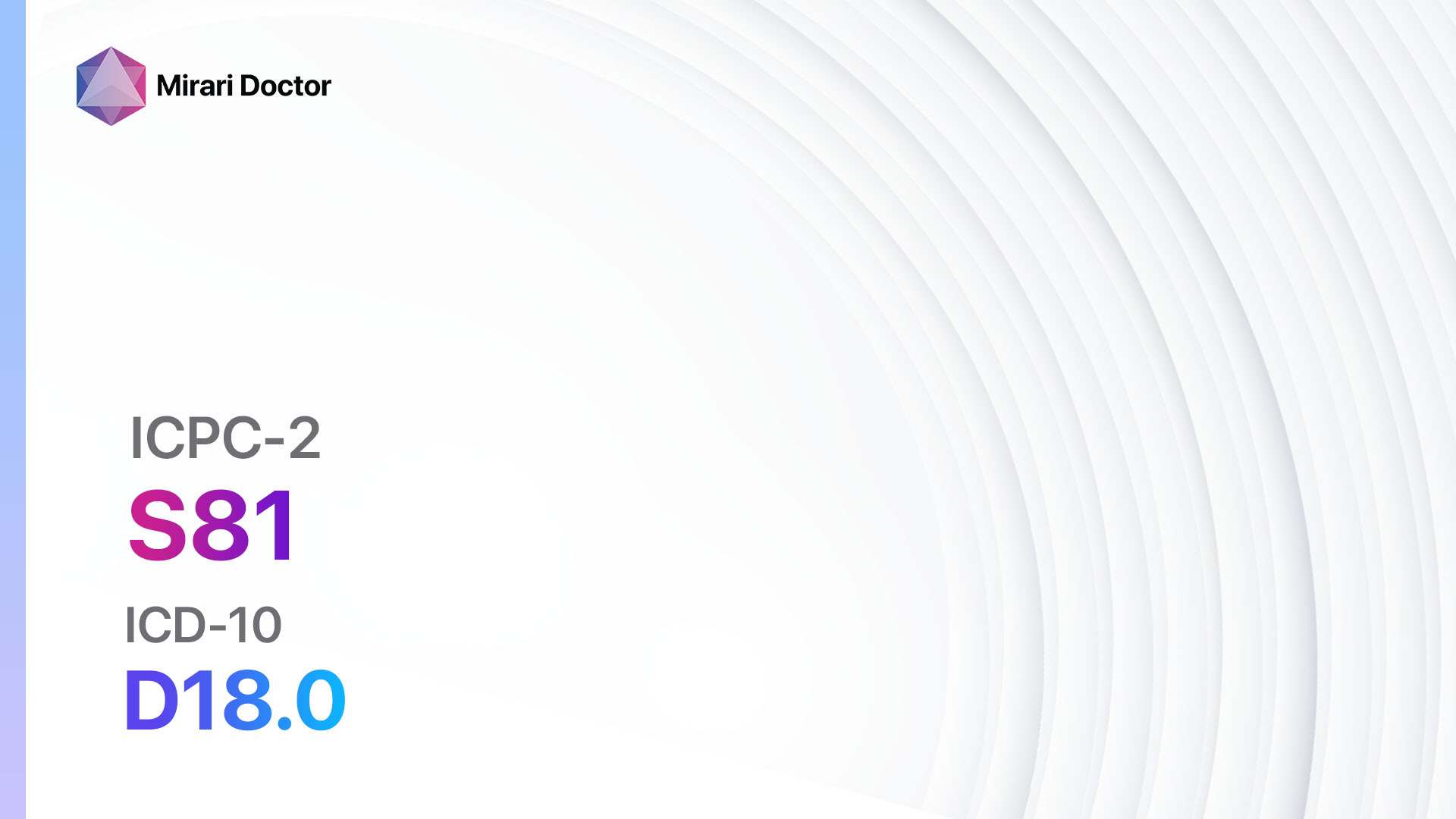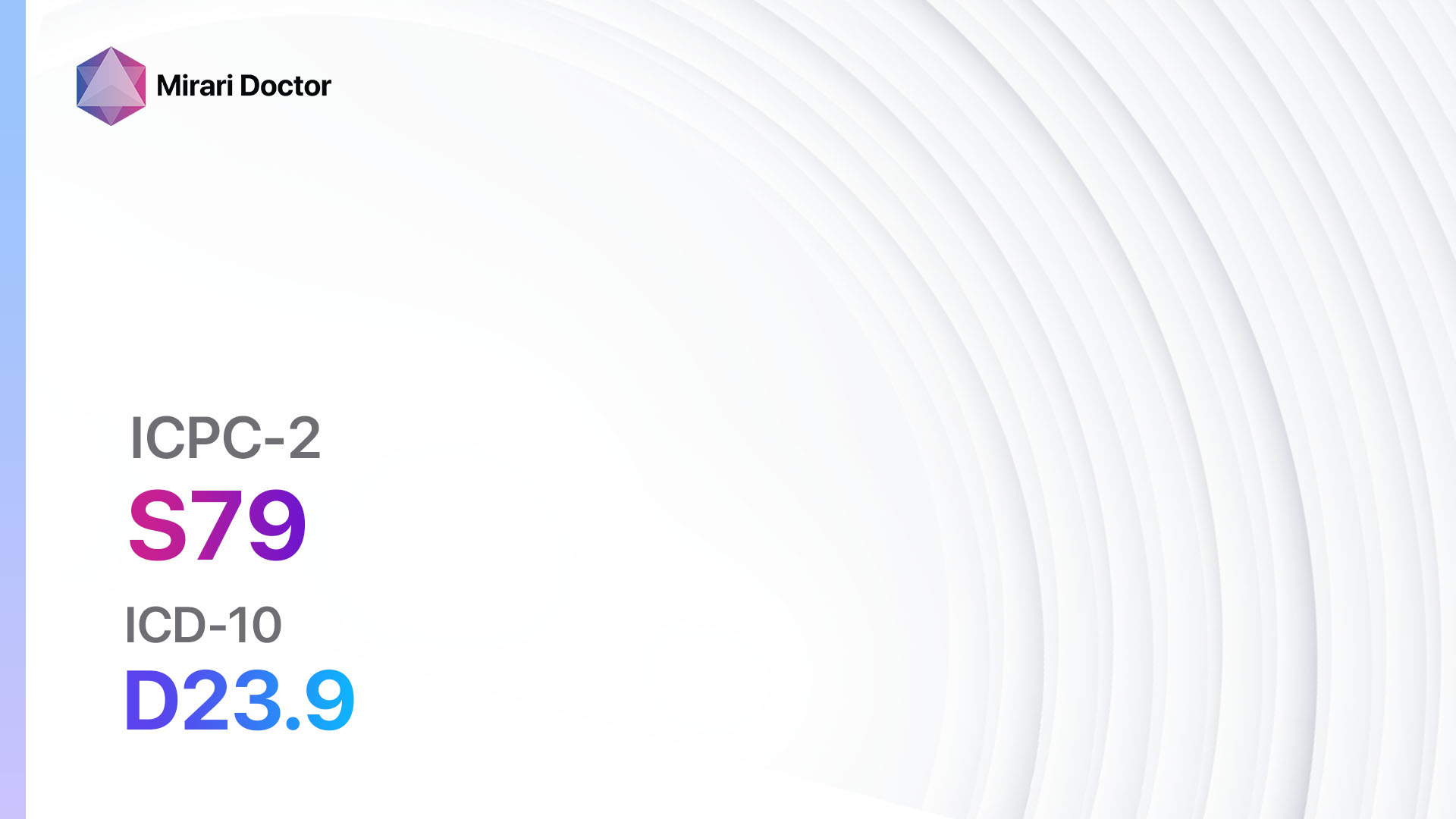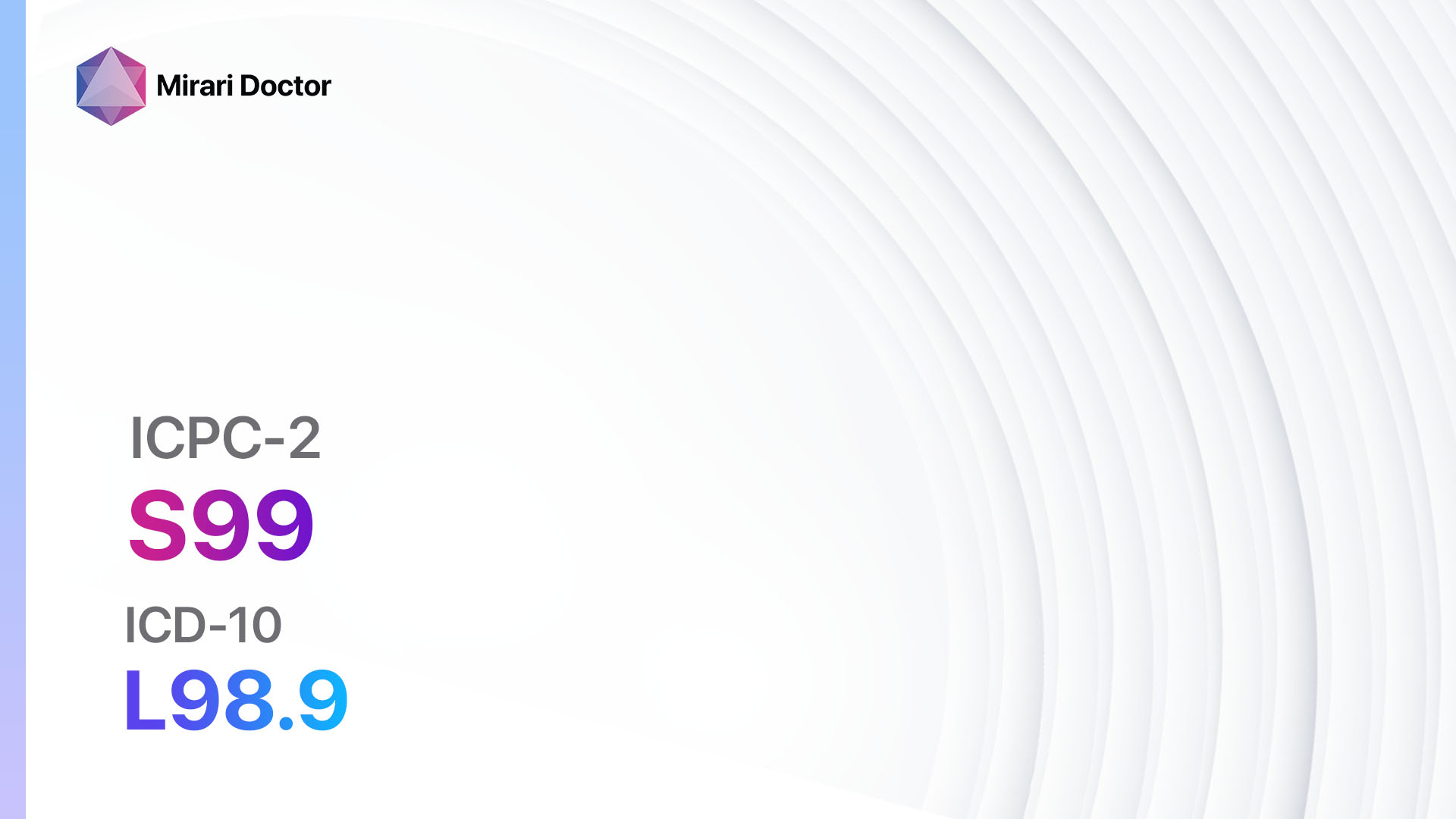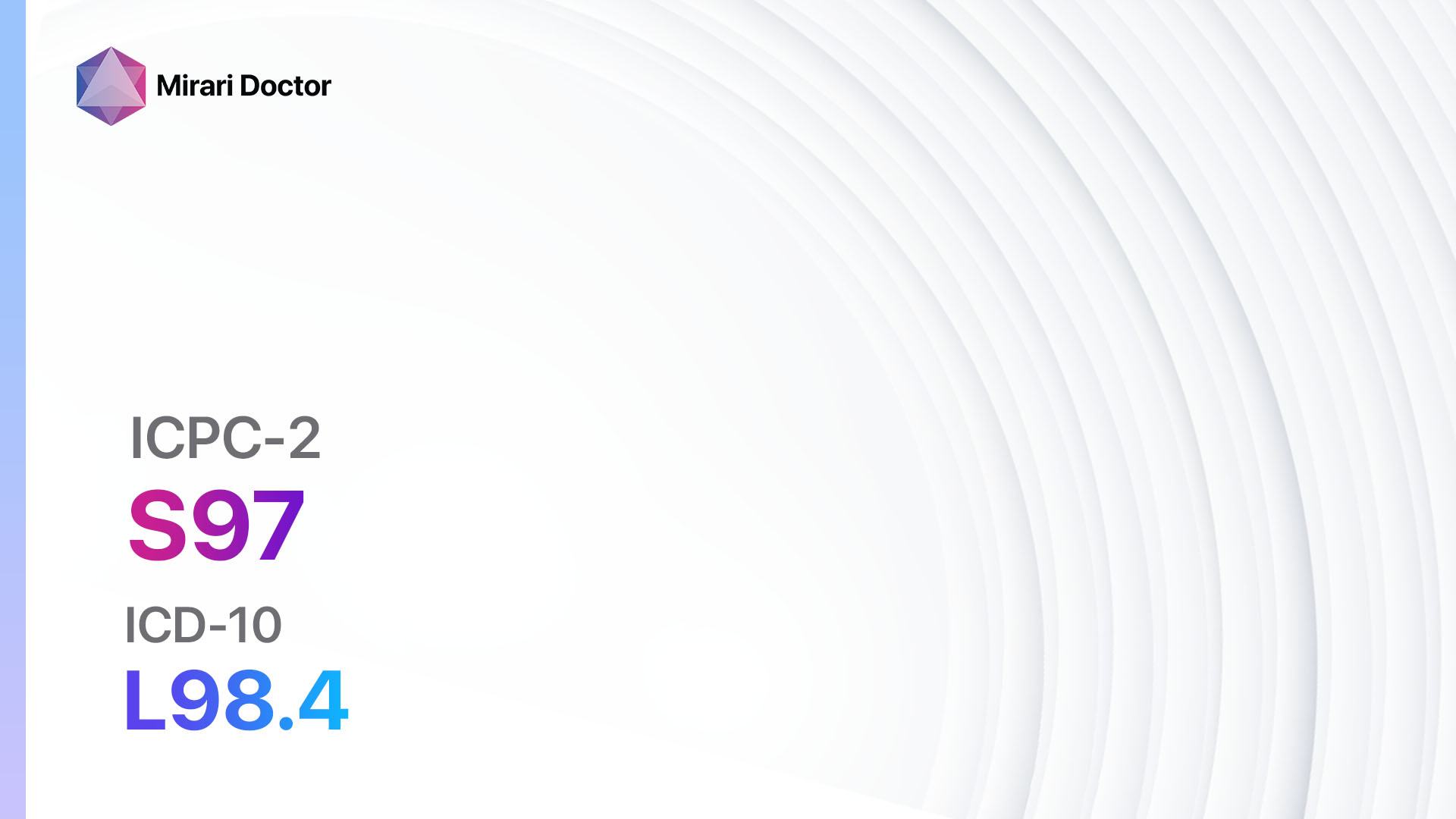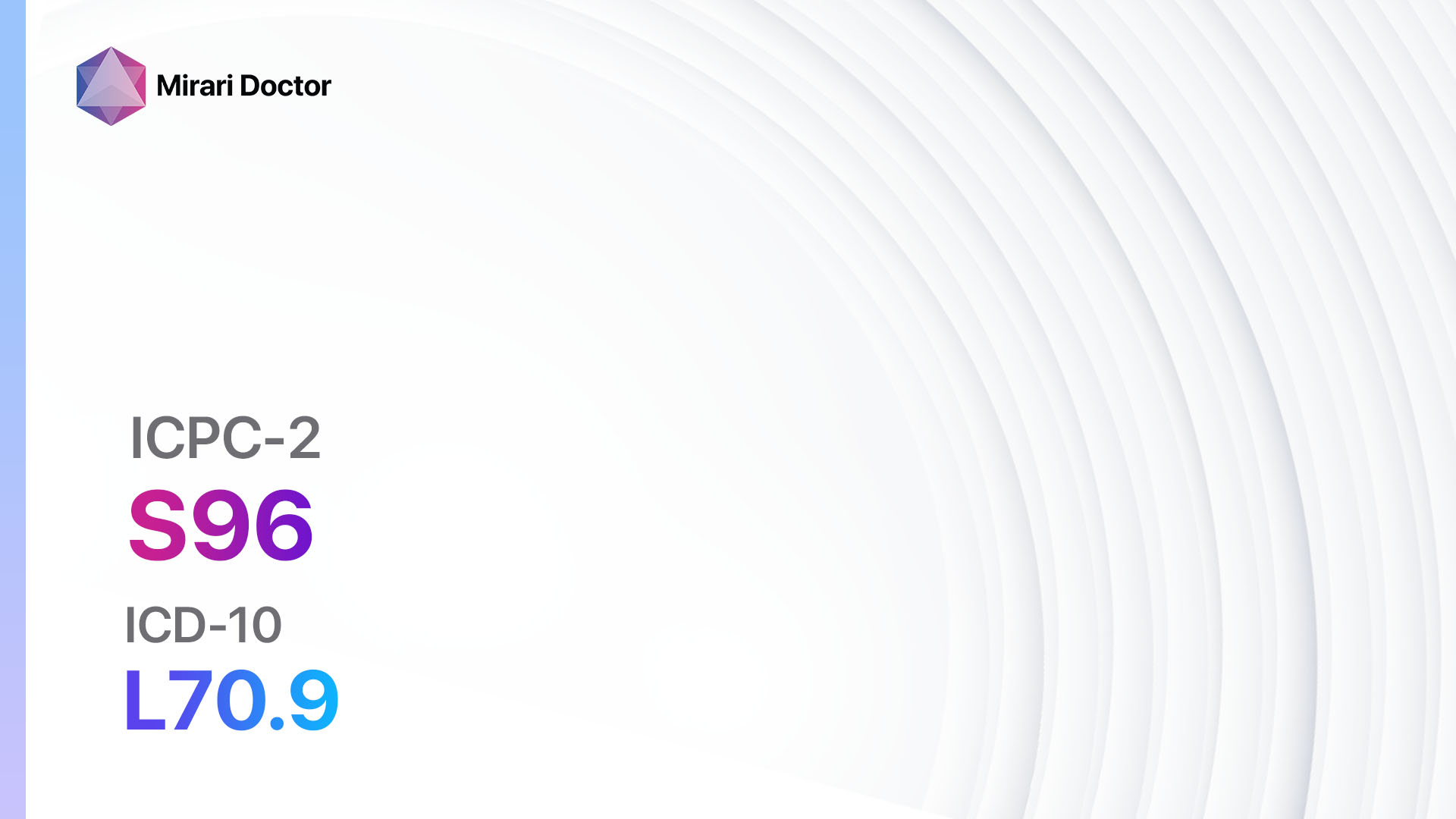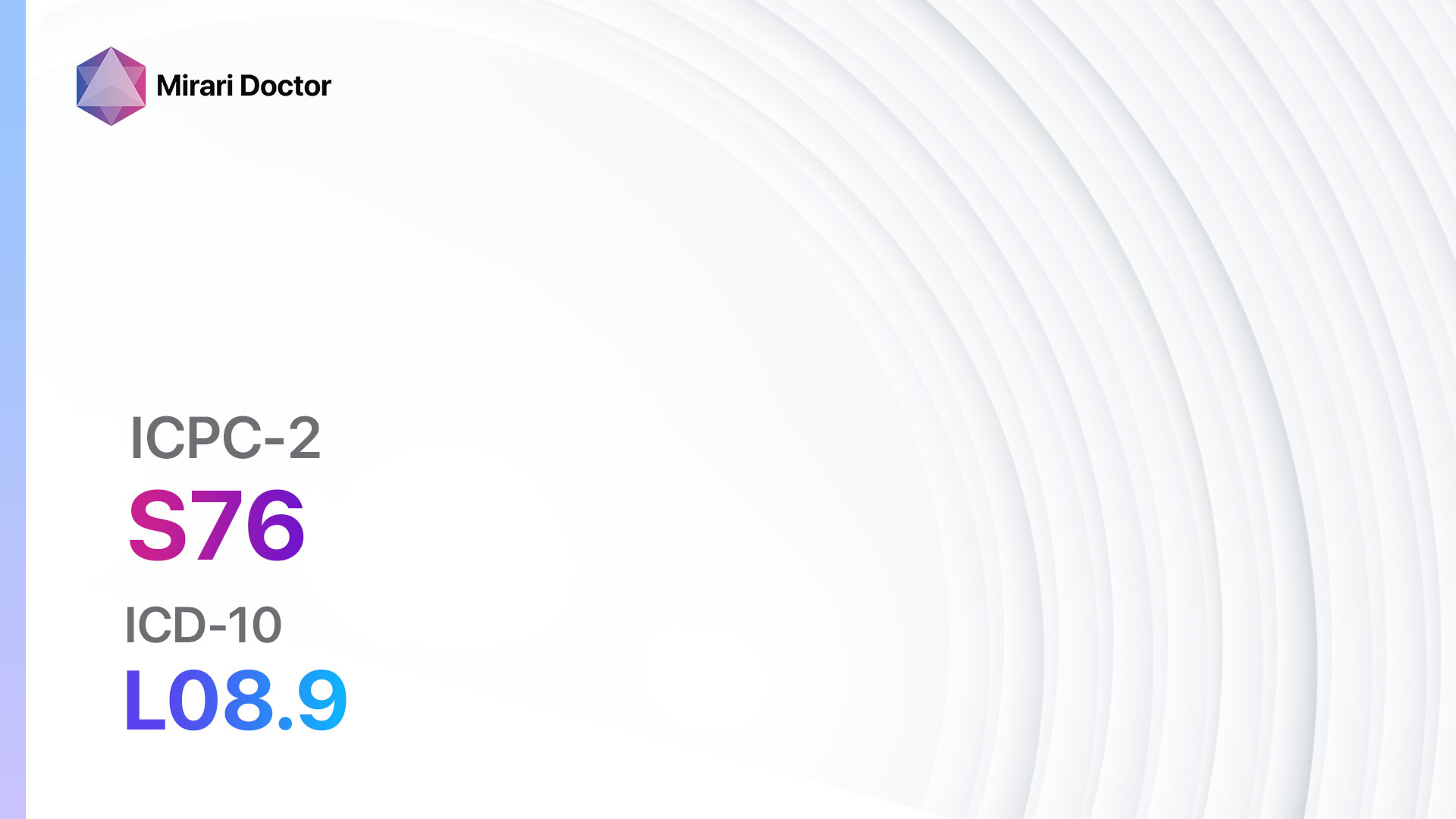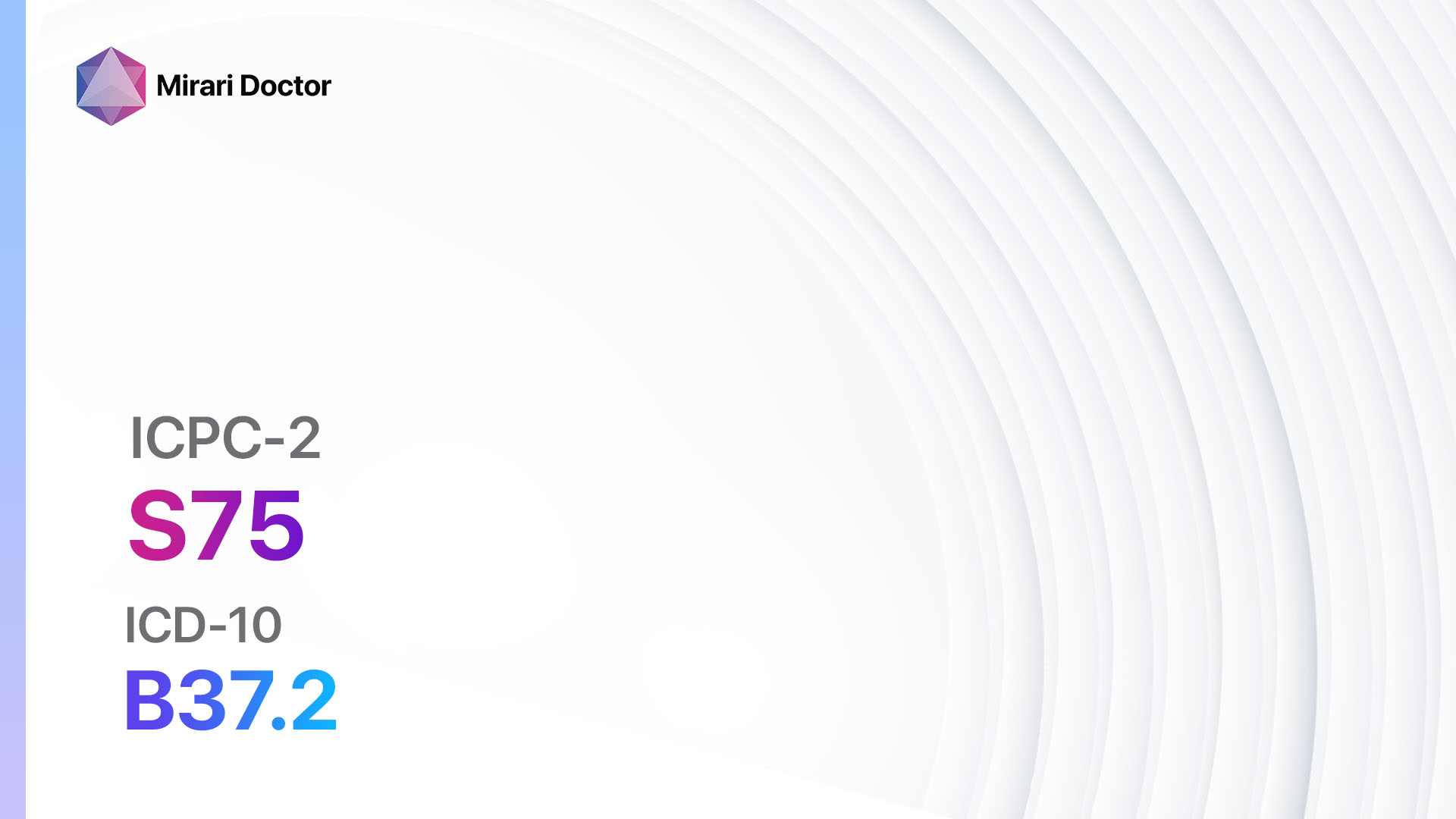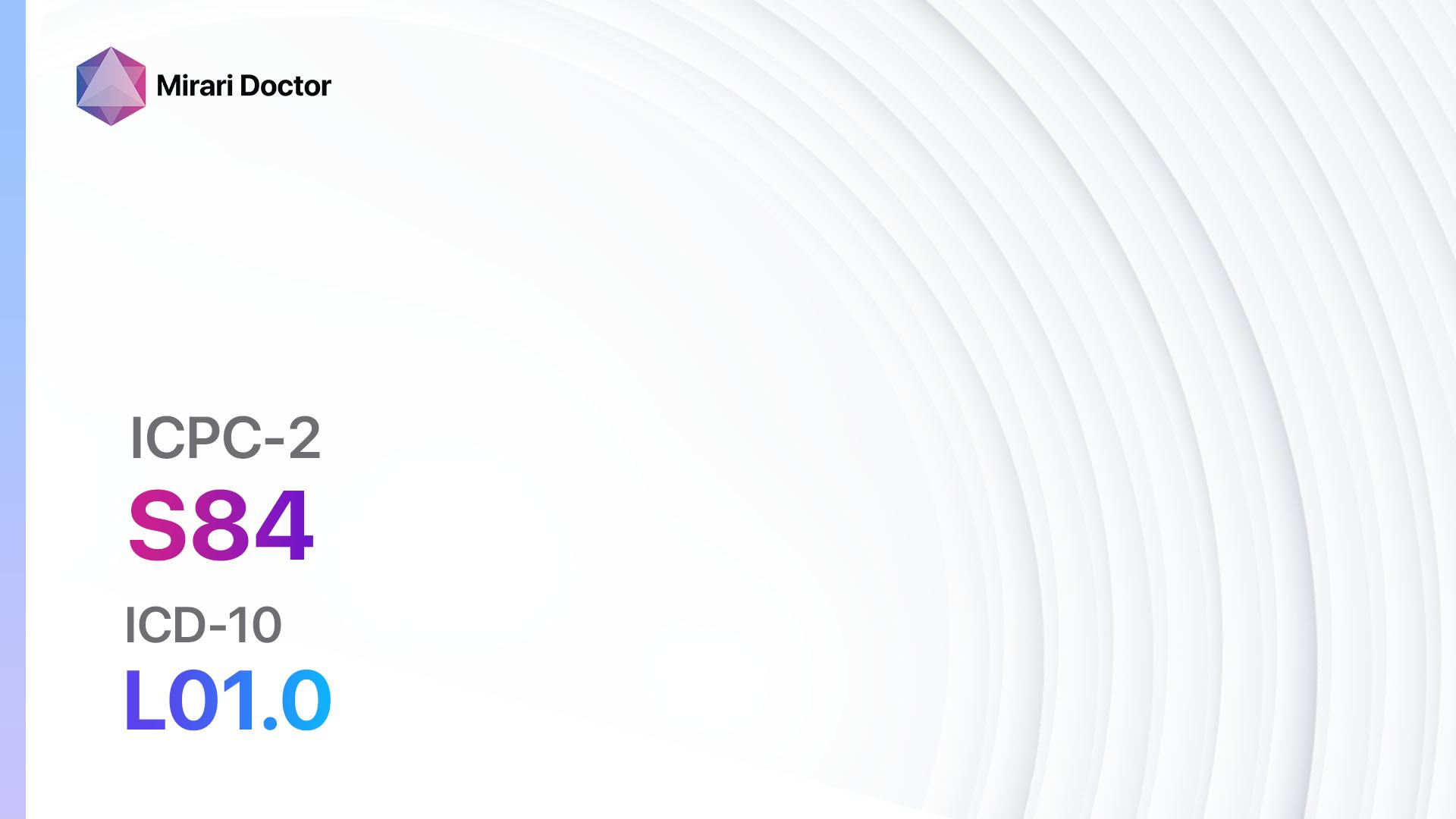
Introduction
Impetigo is a highly contagious bacterial skin infection that primarily affects children. It is characterized by the formation of red sores or blisters that can break open, ooze fluid, and develop a yellow-brown crust[1]. The condition is caused by either Staphylococcus aureus or Streptococcus pyogenes bacteria[2]. The aim of this guide is to provide a comprehensive overview of the symptoms, causes, diagnostic steps, possible interventions, and lifestyle interventions for impetigo.
Codes
Symptoms
- Red sores or blisters
- Fluid-filled blisters that burst and develop a yellow-brown crust
- Itchy rash
- Sores that spread to other areas of the body through scratching or contact
- Swollen lymph nodes in severe cases[5]
Causes
- Staphylococcus aureus bacteria
- Streptococcus pyogenes bacteria
- Direct contact with an infected person’s skin or personal items
- Poor hygiene practices
- Skin injuries or conditions that create openings for bacteria to enter[6]
Diagnostic Steps
Medical History
- Gather information about the patient’s symptoms, including the appearance and progression of the sores.
- Ask about any recent exposure to individuals with impetigo.
- Inquire about any underlying medical conditions or skin injuries that may increase the risk of infection[7].
Physical Examination
- Inspect the affected areas of the skin for characteristic signs of impetigo, such as red sores, fluid-filled blisters, and crust formation.
- Check for swollen lymph nodes, which may indicate a more severe infection[8].
Determine Severity
- Classify impetigo based on severity and depth:
- Non-bullous impetigo: Characterized by small blisters that burst and develop a honey-colored crust.
- Bullous impetigo: Involves larger fluid-filled blisters that do not burst easily and leave a thin, fragile skin layer.
- Ecthyma: A more severe form of impetigo that penetrates deeper into the skin, causing painful ulcers and scarring[9].
Laboratory Tests
- Gram stain and culture: Collect a sample from the affected area to identify the specific bacteria causing the infection.
- Polymerase chain reaction (PCR): Used to detect the presence of bacterial DNA in the skin sample.
- Blood tests: May be performed to assess the overall health of the patient and rule out any underlying conditions[10].
Diagnostic Imaging
- No diagnostic imaging is necessary for the diagnosis of impetigo.
Other Tests
- None
Follow-up and Patient Education
- Schedule a follow-up appointment to monitor the progress of the infection and ensure proper healing.
- Educate the patient and their caregivers about the importance of good hygiene practices, such as regular handwashing and avoiding sharing personal items.
- Provide information on the proper care and cleaning of the affected areas to prevent the spread of infection.
Possible Interventions
Traditional Interventions
Medications:
Top 5 drugs for Impetigo:
- Mupirocin (brand name: Bactroban):
- Cost: $20-$50 for a 22-gram tube.
- Contraindications: Hypersensitivity to mupirocin or any other ingredients in the formulation.
- Side effects: Burning, stinging, itching, or pain at the application site.
- Severe side effects: Allergic reactions, such as rash, itching, or swelling.
- Drug interactions: No significant drug interactions reported.
- Warning: Avoid contact with eyes, nose, mouth, or open wounds.
- Retapamulin (brand name: Altabax):
- Cost: $200-$300 for a 15-gram tube.
- Contraindications: Hypersensitivity to retapamulin or any other ingredients in the formulation.
- Side effects: Headache, diarrhea, nausea, or vomiting.
- Severe side effects: Allergic reactions, such as rash, itching, or swelling.
- Drug interactions: No significant drug interactions reported.
- Warning: For external use only. Avoid contact with eyes, nose, mouth, or open wounds.
- Cephalexin (brand name: Keflex):
- Cost: $10-$50 for a 30-day supply.
- Contraindications: Hypersensitivity to cephalexin or any other cephalosporin antibiotics.
- Side effects: Diarrhea, nausea, vomiting, or stomach pain.
- Severe side effects: Severe allergic reactions, such as rash, itching, or swelling.
- Drug interactions: No significant drug interactions reported.
- Warning: Finish the full course of medication as prescribed.
- Dicloxacillin (brand name: Dynapen):
- Cost: $10-$50 for a 30-day supply.
- Contraindications: Hypersensitivity to dicloxacillin or any other penicillin antibiotics.
- Side effects: Diarrhea, nausea, vomiting, or stomach pain.
- Severe side effects: Severe allergic reactions, such as rash, itching, or swelling.
- Drug interactions: No significant drug interactions reported.
- Warning: Finish the full course of medication as prescribed.
- Clindamycin (brand name: Cleocin):
- Cost: $10-$50 for a 30-day supply.
- Contraindications: Hypersensitivity to clindamycin or any other lincosamide antibiotics.
- Side effects: Diarrhea, nausea, vomiting, or stomach pain.
- Severe side effects: Severe allergic reactions, such as rash, itching, or swelling.
- Drug interactions: No significant drug interactions reported.
- Warning: Finish the full course of medication as prescribed.
Alternative Drugs:
- Azithromycin (brand name: Zithromax): An alternative antibiotic option for patients who cannot tolerate or are allergic to the above medications.
- Trimethoprim-sulfamethoxazole (brand name: Bactrim): Another alternative antibiotic option for patients who cannot tolerate or are allergic to the above medications.
- Doxycycline: A tetracycline antibiotic that may be used in cases of severe or recurrent impetigo.
- Ciprofloxacin: A fluoroquinolone antibiotic that may be used in cases of severe or recurrent impetigo.
- Clarithromycin: A macrolide antibiotic that may be used in cases of severe or recurrent impetigo.
Surgical Procedures:
- No surgical procedures are necessary for the treatment of impetigo.
Alternative Interventions
- Tea tree oil: Apply diluted tea tree oil to the affected areas to help kill bacteria and promote healing. Cost: $10-$20 for a small bottle.
- Manuka honey: Apply medical-grade manuka honey to the sores to help fight infection and speed up healing. Cost: $20-$50 for a jar.
- Colloidal silver: Apply colloidal silver gel or cream to the affected areas to help kill bacteria. Cost: $10-$30 for a small bottle.
- Garlic: Crush fresh garlic and apply it to the sores to take advantage of its antimicrobial properties. Cost: $2-$5 for a bulb of garlic.
- Calendula cream: Apply calendula cream to the affected areas to soothe the skin and promote healing. Cost: $10-$20 for a tube.
Lifestyle Interventions
- Good hygiene practices: Encourage regular handwashing with soap and water, especially after touching the affected areas. Cost: Minimal.
- Avoid scratching: Advise the patient to avoid scratching the sores to prevent further spread of the infection. Cost: None.
- Clean and cover the sores: Instruct the patient to clean the affected areas with mild soap and water, apply antibiotic ointment, and cover them with sterile gauze or bandages. Cost: Minimal.
- Avoid sharing personal items: Emphasize the importance of not sharing towels, clothing, or other personal items to prevent the spread of infection. Cost: None.
- Launder clothing and bedding: Instruct the patient to wash clothing, bedding, and towels in hot water to kill any bacteria. Cost: Minimal.
It is important to note that the cost ranges provided are approximate and may vary depending on the location and availability of the interventions.
Mirari Cold Plasma Alternative Intervention
Understanding Mirari Cold Plasma
- Safe and Non-Invasive Treatment: Mirari Cold Plasma is a safe and non-invasive treatment option for various skin conditions. It does not require incisions, minimizing the risk of scarring, bleeding, or tissue damage.
- Efficient Extraction of Foreign Bodies: Mirari Cold Plasma facilitates the removal of foreign bodies from the skin by degrading and dissociating organic matter, allowing easier access and extraction.
- Pain Reduction and Comfort: Mirari Cold Plasma has a local analgesic effect, providing pain relief during the treatment, making it more comfortable for the patient.
- Reduced Risk of Infection: Mirari Cold Plasma has antimicrobial properties, effectively killing bacteria and reducing the risk of infection.
- Accelerated Healing and Minimal Scarring: Mirari Cold Plasma stimulates wound healing and tissue regeneration, reducing healing time and minimizing the formation of scars.
Mirari Cold Plasma Prescription
Video instructions for using Mirari Cold Plasma Device – S84 Impetigo (ICD-10:L01.0)
| Mild | Moderate | Severe |
| Mode setting: 1 (Infection) Location: 0 (Localized) Morning: 15 minutes, Evening: 15 minutes | Mode setting: 1 (Infection) Location: 0 (Localized) Morning: 30 minutes, Lunch: 30 minutes, Evening: 30 minutes | Mode setting: 1 (Infection) Location: 0 (Localized) Morning: 30 minutes, Lunch: 30 minutes, Evening: 30 minutes |
| Mode setting: 2 (Wound Healing) Location: 0 (Localized) Morning: 15 minutes, Evening: 15 minutes | Mode setting: 2 (Wound Healing) Location: 0 (Localized) Morning: 30 minutes, Lunch: 30 minutes, Evening: 30 minutes | Mode setting: 2 (Wound Healing) Location: 0 (Localized) Morning: 30 minutes, Lunch: 30 minutes, Evening: 30 minutes |
| Mode setting: 3 (Antiviral Therapy) Location: 0 (Localized) Morning: 15 minutes, Evening: 15 minutes | Mode setting: 3 (Antiviral Therapy) Location: 0 (Localized) Morning: 30 minutes, Lunch: 30 minutes, Evening: 30 minutes | Mode setting: 3 (Antiviral Therapy) Location: 0 (Localized) Morning: 30 minutes, Lunch: 30 minutes, Evening: 30 minutes |
| Mode setting:10 (Dermatitis/Fungus) Location:0 (Localized) Morning:15 minutes, Evening:15minutes | Mode setting:10 (Dermatitis/Fungus) Location:0 (Localized) Morning:30 minutes, Lunch:30 minutes, Evening:30 minutes | Mode setting:10 (Dermatitis/Fungus) Location:0 (Localized) Morning:30 minutes, Lunch:30 minutes, Evening:30 minutes |
| Total Morning:60minutesapprox.$10USD, Evening:60minutesapprox.$10USD | Total Morning:120minutesapprox.$20USD, Lunch:120minutesapprox. $20 USD, Evening:120minutesapprox. $20 USD, | Total Morning:120minutesapprox.$20USD, Lunch:120minutesapprox. $20 USD, Evening:120minutesapprox. $20 USD, |
| Usualtreatmentfor7-60daysapprox.$140USD–$1200USD | Usualtreatmentfor6-8weeksapprox.$2,520USD–$3,360USD | Usualtreatmentfor3-6monthsapprox.$5,400USD–$10,800USD |
 |
|
Use the Mirari Cold Plasma device to treat Impetigo effectively.
WARNING: MIRARI COLD PLASMA IS DESIGNED FOR THE HUMAN BODY WITHOUT ANY ARTIFICIAL OR THIRD PARTY PRODUCTS. USE OF OTHER PRODUCTS IN COMBINATION WITH MIRARI COLD PLASMA MAY CAUSE UNPREDICTABLE EFFECTS, HARM OR INJURY. PLEASE CONSULT A MEDICAL PROFESSIONAL BEFORE COMBINING ANY OTHER PRODUCTS WITH USE OF MIRARI.
Step 1: Cleanse the Skin
- Start by cleaning the affected area of the skin with a gentle cleanser or mild soap and water. Gently pat the area dry with a clean towel.
Step 2: Prepare the Mirari Cold Plasma device
- Ensure that the Mirari Cold Plasma device is fully charged or has fresh batteries as per the manufacturer’s instructions. Make sure the device is clean and in good working condition.
- Switch on the Mirari device using the power button or by following the specific instructions provided with the device.
- Some Mirari devices may have adjustable settings for intensity or treatment duration. Follow the manufacturer’s instructions to select the appropriate settings based on your needs and the recommended guidelines.
Step 3: Apply the Device
- Place the Mirari device in direct contact with the affected area of the skin. Gently glide or hold the device over the skin surface, ensuring even coverage of the area experiencing.
- Slowly move the Mirari device in a circular motion or follow a specific pattern as indicated in the user manual. This helps ensure thorough treatment coverage.
Step 4: Monitor and Assess:
- Keep track of your progress and evaluate the effectiveness of the Mirari device in managing your Impetigo. If you have any concerns or notice any adverse reactions, consult with your health care professional.
Note
This guide is for informational purposes only and should not replace the advice of a medical professional. Always consult with your healthcare provider or a qualified medical professional for personal advice, diagnosis, or treatment. Do not solely rely on the information presented here for decisions about your health. Use of this information is at your own risk. The authors of this guide, nor any associated entities or platforms, are not responsible for any potential adverse effects or outcomes based on the content.
Mirari Cold Plasma System Disclaimer
- Purpose: The Mirari Cold Plasma System is a Class 2 medical device designed for use by trained healthcare professionals. It is registered for use in Thailand and Vietnam. It is not intended for use outside of these locations.
- Informational Use: The content and information provided with the device are for educational and informational purposes only. They are not a substitute for professional medical advice or care.
- Variable Outcomes: While the device is approved for specific uses, individual outcomes can differ. We do not assert or guarantee specific medical outcomes.
- Consultation: Prior to utilizing the device or making decisions based on its content, it is essential to consult with a Certified Mirari Tele-Therapist and your medical healthcare provider regarding specific protocols.
- Liability: By using this device, users are acknowledging and accepting all potential risks. Neither the manufacturer nor the distributor will be held accountable for any adverse reactions, injuries, or damages stemming from its use.
- Geographical Availability: This device has received approval for designated purposes by the Thai and Vietnam FDA. As of now, outside of Thailand and Vietnam, the Mirari Cold Plasma System is not available for purchase or use.
References
- Mayo Clinic. (2022). Impetigo – Symptoms and causes. Retrieved from//www.mayoclinic.org/diseases-conditions/impetigo/symptoms-causes/syc-20352352
- Centers for Disease Control and Prevention. (2022). Impetigo. Retrieved from//www.cdc.gov/groupastrep/diseases-public/impetigo.html
- World Organization of Family Doctors. (2020). ICPC-2 – English. Retrieved from//www.gesy.org.cy/el-gr/annualreport/icpc-2-english1-10.pdf
- World Health Organization. (2019). International Statistical Classification of Diseases and Related Health Problems 10th Revision (ICD-10)-WHO Version for 2019.
- American Academy of Dermatology. (2023). Impetigo: Signs and symptoms. Retrieved from//www.aad.org/public/diseases/a-z/impetigo-symptoms
- Hartman-Adams, H., Banvard, C., & Juckett, G. (2014). Impetigo: diagnosis and treatment. American family physician, 90(4), 229-235.
- Koning, S., van der Sande, R., Verhagen, A. P., van Suijlekom-Smit, L. W., Morris, A. D., Butler, C. C., … & van der Wouden, J. C. (2012). Interventions for impetigo. Cochrane Database of Systematic Reviews, (1).
- Bowen, A. C., Mahé, A., Hay, R. J., Andrews, R. M., Steer, A. C., Tong, S. Y., & Carapetis, J. R. (2015). The global epidemiology of impetigo: a systematic review of the population prevalence of impetigo and pyoderma. PLoS One, 10(8), e0136789.
- George, A., & Rubin, G. (2003). A systematic review and meta-analysis of treatments for impetigo. British Journal of General Practice, 53(491), 480-487.
- Pereira, L. B. (2014). Impetigo – review. Anais brasileiros de dermatologia, 89, 293-299.
Related articles
Made in USA



